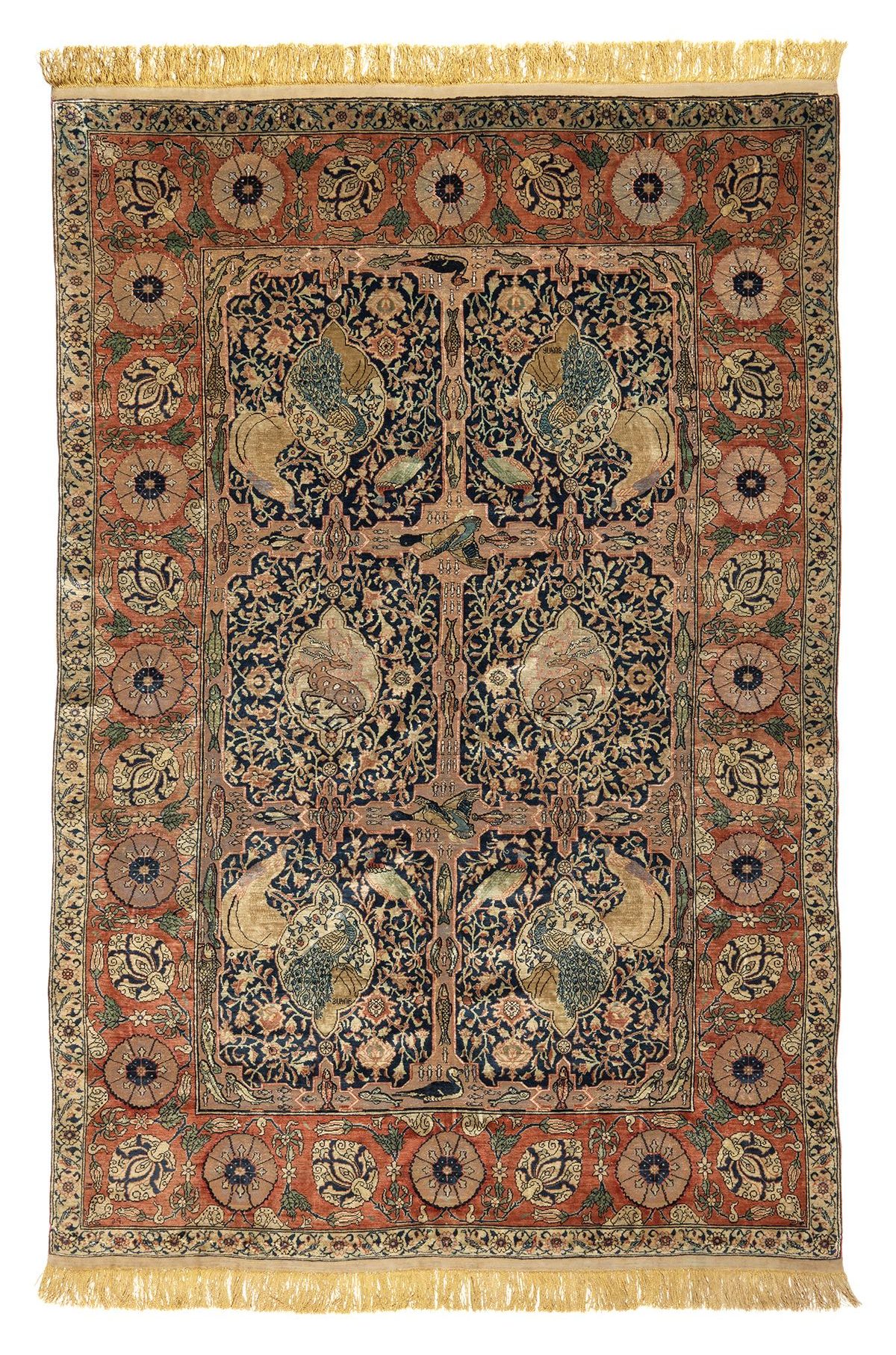Travelling Carpets

An impressive set of Kum Kapi carpets, dating to the 19th and 20th centuries and from the Gulbenkian Collection, is displayed side by side a contemporary carpet, the work of Mehkitar Garabedian, one of the artists represented in the Pavilion of Armenia in the last edition of the Venice Biennial.
The Kum Kapi (“door of sand” in Turkish) carpets owe their name to an Istanbul neighbourhood where, in the 19th century, various Armenian master weavers produced luxurious works in silk knot with metallic thread and inspired on the classical Persian carpets of the 16th and 17th centuries. Their excellent technical quality and the richness of the materials applied in their crafting ensured they became precious work of art, produced between 1890 and 1930, contrasting sharply with the precarious conditions of their production.
One of the most prestigious masters of this type of carpet was Hagop Kapoudjian (c. 1870-1946), author of three of the four pieces now on exhibition. Born in Turkey, he settled in Paris at the beginning of the 20th century and was responsible for the restoration of some of the best examples of Persian pieces in the Calouste Gulbenkian collection. As well as a renowned restorer, Hagop was also a wonderfully skilled weaver, dedicated to the study of Persian carpet patterns from the Safavid period (16th and 17th centuries) and creating his own designs based upon his study findings. Many of these carpets are signed in Armenian, which was uncommon due to the persecution that this people faced at that time.
Mekhitar Garabedian, of Armenian origin, is a contemporary artist of Syrian origin (b. 1977, Aleppo) and residing in Gant, Belgium. Garabedian presents two works that evoke exercises in learning the Armenian alphabet, here rendered in a knot carpet and designed directly onto the gallery walls. This sample places two artists, from different periods and places, side by side in order to share their common past, establishing a dialogue between tradition and contemporaneity, continuity and reinvention and displaying in a surprising fashion the interrelationship between the carpet and the voyage that is here, more than ever, associated with the Armenian diaspora.
